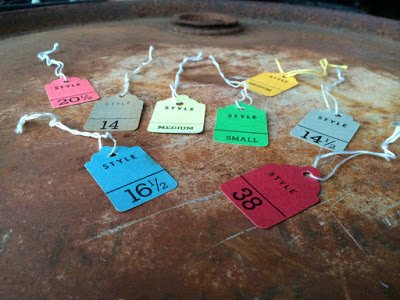There are ways to identify the vintages of items, but there are no blanket statements like these that hold true in every case. Look at the Quick Tips for Dating Vintage on the Vintage Fashion Guild site for some basics, but realize that it isn’t a perfect science. For instance, metal zippers were used by home seamstresses long after they went out of use by manufacturers. Reproduction and vintage-inspired clothing can often fool a newcomer to vintage. In this post I make more suggestions for further research.
16. Everything vintage belonged to dead people.
OK, this one makes me laugh, but it is a serious issue for some. If you truly feel squeamish at the thought of wearing something someone else wore, keep in mind that the new clothing you try on may also have been worn by someone else, in the dressing room, or before being returned to the store.
Yes, many a person has passed on whose clothing is perfectly fine. You honor them by keeping this facet of their history alive. Older women have told me they are very pleased to have their clothing be worn by younger people around the world.
17. There is such a thing as vintage condition.
This is a term often used to say something like “good considering it is old.” That kind of muddies the waters, as in reality, vintage items can be good as new, excellent, etc., without further qualification.
[When I first posted this blog, it caused some discussion among people in the vintage fashion marketplace, so I wrote an additional post about condition
to help clarify my position.]
18. This belonged to my mother’s best friend’s mother and she swore it was from the 1920s, so it has to be.
It is amazing how many people remember with scientific clarity exactly when and where they purchased and wore certain items. Then there are those who don’t.
19. If it does not have a label it must be a knockoff or is poorly made.
and 20. All labels are important.
When you get more into vintage, you will find that some of the very best items are without labels. Labels are great to see, and sometimes help you understand the history of the item, but not all are distinguished. On the flip side, some people removed great labels, perhaps as souvenirs. I have had a 1950s Dior suit without label, and only by consulting a number of experts was I able to confirm that the Dior jacquard lining wasn’t lying!
21. If it has a label with a name, that name was a designer.
Often there is a designer name or two behind a label, but the label itself may not give you a clue. One case in point is Suzy Perette...there was no Suzy. See the Vintage Fashion Guild’s Label Resource for the story behind the labels.

















































































